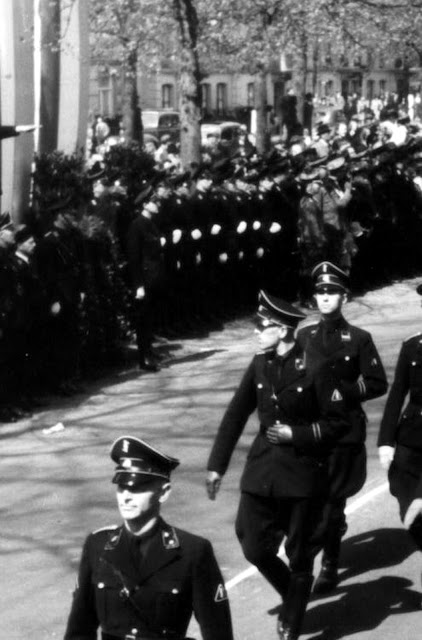Image size: 1600 x 1284 pixel. 368 KB
Date: Monday, 5 June 1944
Place: RAF Greenham Common, Berkshire, England
Photographer: Unknown
One of the most iconic photographs of World War II, and of General Eisenhower, this image is forever linked with June 6th D-Day Landing. The photograph was actually taken the evening before the June 6th operations for the allied assault on Normandy, also known as "D-Day." In an English airfield in Greenham Common, members of the 101st Airborne were being briefed for their operation to jump from their gliders in the early hours of June 6th behind Utah beach. General Eisenhower left his command post and drove down to Greenham to spend time with the men of the 101st and 82nd before their jump. Eisenhower had been advised by his tactical air commander that 50 percent of the paratroopers would be dead before they hit the ground, and that 70 percent of the gliders would be lost in the initial air assault. British Air Marshall Trafford-Leigh Mallory warned Eisenhower to cancel the drop on Utah Beach, that in his opinion it would result in the “futile slaughter” of two airborne divisions. Though Eisenhower agonized over the projected heavy casualties, he decided to go ahead with the air drop that would spearhead the invasion. In the snapshot, the general has an intense look on his face and appears as if he could be giving a rousing speech, speaking to a young paratrooper with 23 around neck. That young man was LT. Wallace "Wally" Strobel. But actually, they were talking about fishing. Eisenhower asked where Strobel was from and he replied "Michigan, Sir." "How is the fishing in Michigan?" Eisenhower asked. Strobel replied, "It's great, sir." Eisenhower then said he had visited the state several times himself and that it was a beautiful state. Before moving on, Eisenhower ended with "Go, Michigan." According to Strobel's wife, when the planes took off early the next morning, Eisenhower was standing on the tarmac watching. Wally Strobel survived D-Day, the invasion of Europe and the rest of the war. He returned to Michigan and eventually died of respiratory failure at the age of 77. Servicemen from every unit in the U.S. military have claimed to be in this photo - one of the most famous of World War Il. The paratroopers in this series taken at Greenham Common on June 5, 1944, are all members of the 'E' and 'D' Company of the 502nd Parachute Infantry Regiment / 101st Airborne Division. Anyone saying they are in it who was not a member of that organization is making a fraudulent claim. Left to right: Hans Sannes D/502, Bill Bowser E/502, General Eisenhower, Ralph Pombano E/502, Schuyler Jackson HQ/502, Bill Hayes E/502, Carl Vickers D/502, Lieutenant Wallace Strobel (“23” sign around neck) E/502, Henry Fuller E/502, Bill Boyle E/502, and William Noll E/502. U.S. Army.
Source :
"101st Airborne: The Screaming Eagles in World War II" by Mark Bando
https://www.amazon.com/World-War-Airborne-Eisenhower-WW2V15/dp/B00ONJR4L2
https://www.gettyimages.com/detail/news-photo/general-dwight-d-eisenhower-talking-with-american-news-photo/500471937
https://imgur.com/gallery/fnNFMNS







